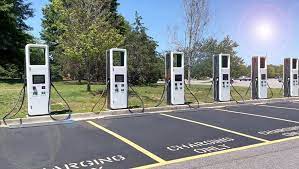
Just like there are different ways to charge your phone, there are also different chargers for electric cars. Using the right charging station for your car is safer, faster and cheaper.
Charging times and power outputs vary, depending on the battery size of your car.
Level 1
It’s best for drivers who don’t need a long charging session or want to maximize their driving range.
Some also feature bi-directional charging, which means you can use the charger as a power bank for your home.
Level 2
However, this is only an estimate and varies widely from one car to the next. It also varies with temperature.
Level 3
This type of charging is ideal for longer trips.
They’re not usually installed at home, but you can find them in parking garages and in front of businesses. They tend to be a little slower than level 2 chargers, but they’re cheaper.
EV drivers can charge at a level 3 charger in about 30 minutes, depending on the battery size and how full it is. If you’re a commuter, you could use a level 3 charger on your way home from work for a quick top-up before getting back on the road.
There are a variety of different models, including 40- and 48-amp units. It’s important to choose one with the right power rating to ensure your EV can charge at its maximum speed. A 40-amp charger is enough for most owners.
Bidirectional
This type of charger has the potential to transform how electricity is used and stored on a large scale.
It can also help decarbonize backup power for homes and buildings. As EV adoption increases, it’s likely that bidirectional charging will become more common in the future.
For now, however, this technology is only available in a few electric cars. The Nissan Leaf and Ford F-150 Lightning are the only models with bidirectional capability at this time.
Several factors stand in the way of bidirectional charging becoming mainstream, including cost and accessibility. needs read more hear



















